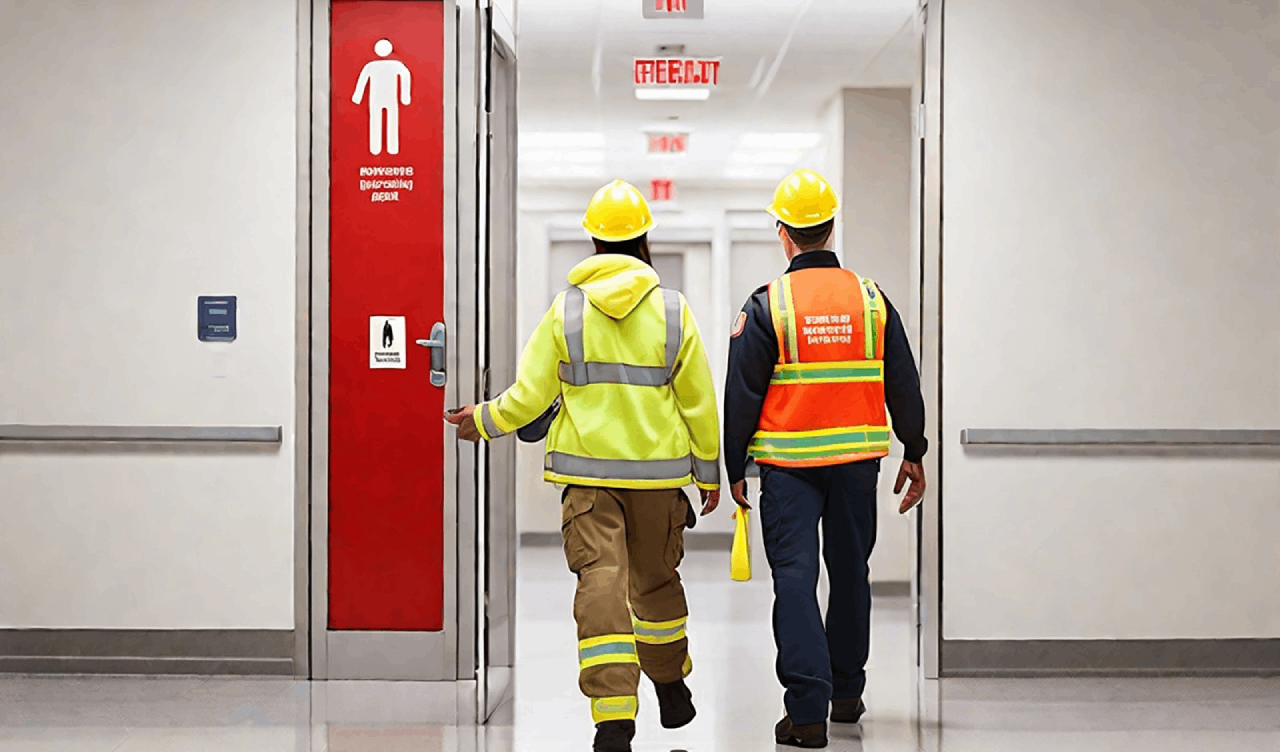
A crucial element of workplace safety that can safeguard lives and minimize property damage is fire safety. A fire safety course is more than merely checking boxes on a legal checklist. We will examine everything from comprehending fire and safety concepts to looking into career options in this area as we dive into the fundamentals of fire safety training in this article. This article will offer helpful insights on being ready in the case of a fire, whether you're a company trying to train your employees or an individual wishing to expand their knowledge through fire safety training. The topics we will cover include fire safety training: how to be prepared in the event of a fire, and more.
Understanding what causes fires in nature and the fundamentals of fire safety are necessary for fighting them off successfully. Class A fires are typical combustibles; Class B flames are flammable liquids; Class C fires are electrical fires; and so on. These classifications are dependent on the kind of fuel involved in the fire. Knowing these classes enables people to use the proper firefighting procedures and choose the right extinguishing product. Furthermore, creating efficient evacuation plans and avoiding the escalation of flames require an understanding of fire behavior, including how it spreads and the environmental factors that encourage its growth.
Preventive actions, including managing the storage of inflammable goods, keeping up with routine maintenance on fire detection and suppression equipment, and doing fire risk assessments, are all included in the concept of fire safety. Through the identification and implementation of mitigation methods, businesses may effectively decrease the probability of fire occurrences.
Employee fire safety training is essential for a number of reasons. In order to minimize the risk to life and property in the case of a fire, it first provides people with the skills and information necessary to respond quickly and efficiently. Second, training helps the company create a culture of safety where staff members actively participate in fire safety initiatives and understand their roles in the workplace. Furthermore, adhering to fire safety standards and laws guarantees legal compliance and shows a dedication to the security of staff and guests.
Topics like using fire extinguishers, evacuation techniques, danger identification, and emergency communication protocols should all be covered in regular training sessions led by certified teachers. Simulations and hands-on exercises can help participants feel more confident managing actual fire situations and reinforce theoretical knowledge. Including fire safety in new hire onboarding procedures also guarantees that staff members are suitably trained to handle crises right away.
To meet a variety of learning preferences and styles, fire safety training could be provided through a variety of channels. Conventional classroom-based courses provide participants with organized learning settings in which they may engage in group activities, ask questions, and communicate with peers and instructors. For extensive training programs that cover a wide range of topics, these sessions are very helpful.
Online classes offer a practical substitute for people with hectic schedules or restricted access to physical training facilities. With the use of interactive simulations and multimedia materials, these self-paced modules let students study whenever and wherever they want while improving their comprehension. Accredited online fire safety courses that meet legal and industry criteria may be found offered by several respectable companies.
Any fire safety program must include practical training exercises like evacuation drills and fire extinguisher demos. Through the application of theoretical information in realistic emergency circumstances, learners may hone their abilities and build confidence through these practical activities. To perform these trainings and guarantee adherence to safety requirements, employers should work with licensed trainers or fire safety specialists.
Those who are enthusiastic about defending property and lives might find a variety of job options in the fire and safety industry. As they put out flames, free-stranded people, and tend to victims' injuries, firefighters are at the forefront of emergency response operations. These courageous professionals must be physically fit, have strong problem-solving abilities, and maintain composure under duress. They also undergo extensive training.
When developing infrastructure and buildings with fire prevention and mitigation in mind, fire safety engineers are essential. They evaluate the likelihood of fires, create safety procedures, and suggest actions to improve fire resistance and evacuation effectiveness. A solid basis in engineering concepts, fire dynamics, and building codes is necessary for this multidisciplinary area.
Specialists in occupational health and safety are concerned with locating potential dangers at work, such as fire hazards, and putting safety precautions in place to safeguard both employees and the environment. They create safety rules, carry out inspections, and offer training to guarantee adherence to legal standards and industry best practices. For this position, one usually needs a background in environmental science, industrial hygiene, or occupational health.
Developing expertise in fire and safety necessitates ongoing education, real-world experience, and a dedication to career advancement. Here are some pointers to improve your level of knowledge in this area:
By participating in conferences, workshops, and seminars, you may stay up-to-date on the most recent advancements in fire safety technology, laws, and best practices.
To obtain real-world experience and use theoretical information in actual situations, look for chances to volunteer with local fire departments, intern with safety consulting organizations, or take part in fire drills.
To prove your competence and build your reputation in the industry, get essential certificates like Certified Safety Professional (CSP), Certified Fire Protection Specialist (CFPS), or Certified Fire Inspector (CFI).
Make connections with other professionals in the fire and safety community, industry leaders, and professional groups to share ideas, look for mentoring, and investigate career prospects.
To keep learning more about fire and safety, consider your experiences, get input from peers and superiors, and pinpoint areas that need work.
One essential component of workplace safety is fire safety training, which calls for a thorough grasp of emergency response protocols, preventative measures, and fire behavior. Individuals and organizations may reduce the danger of fire, save lives and property, and make everyone's surroundings safer by funding training initiatives.